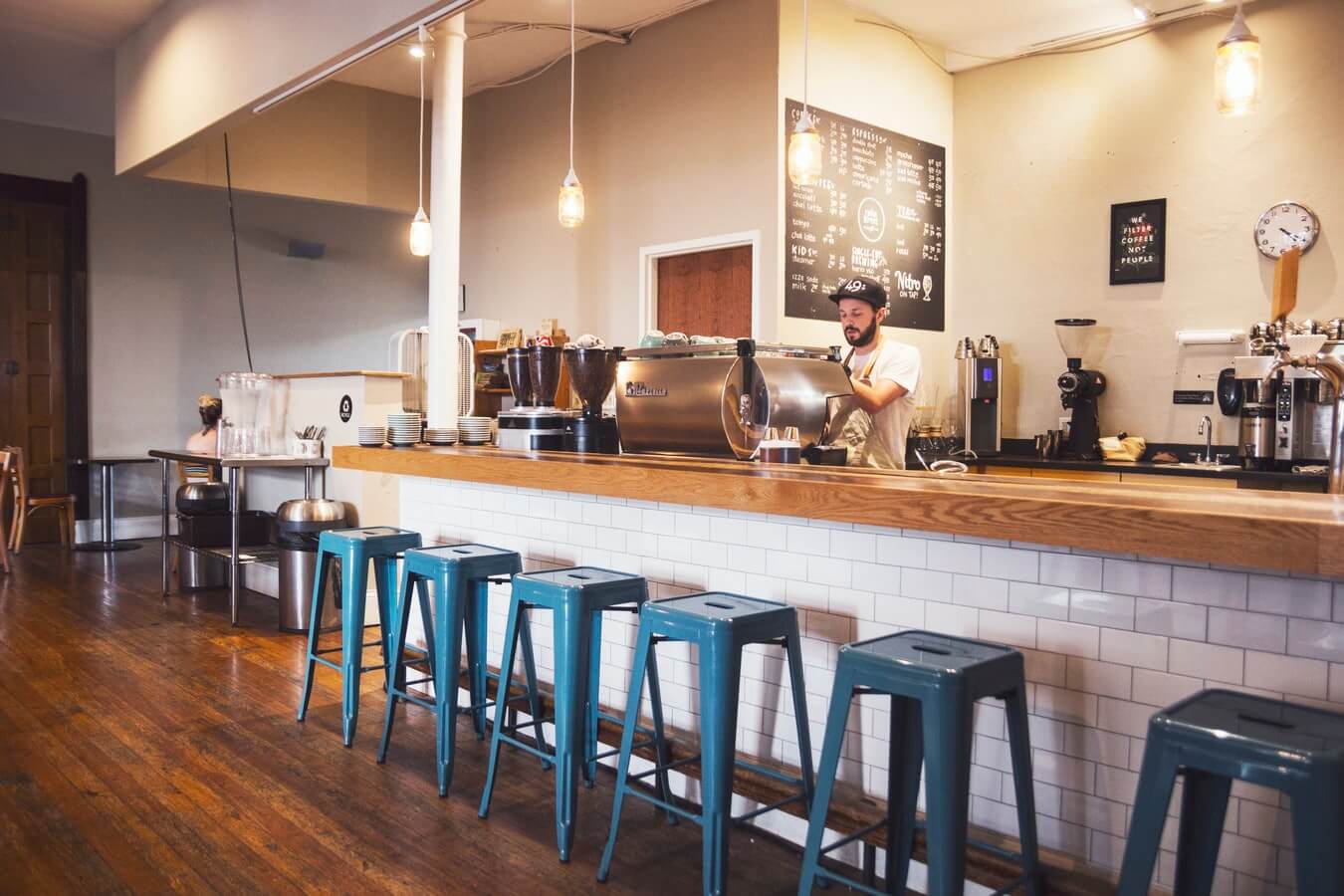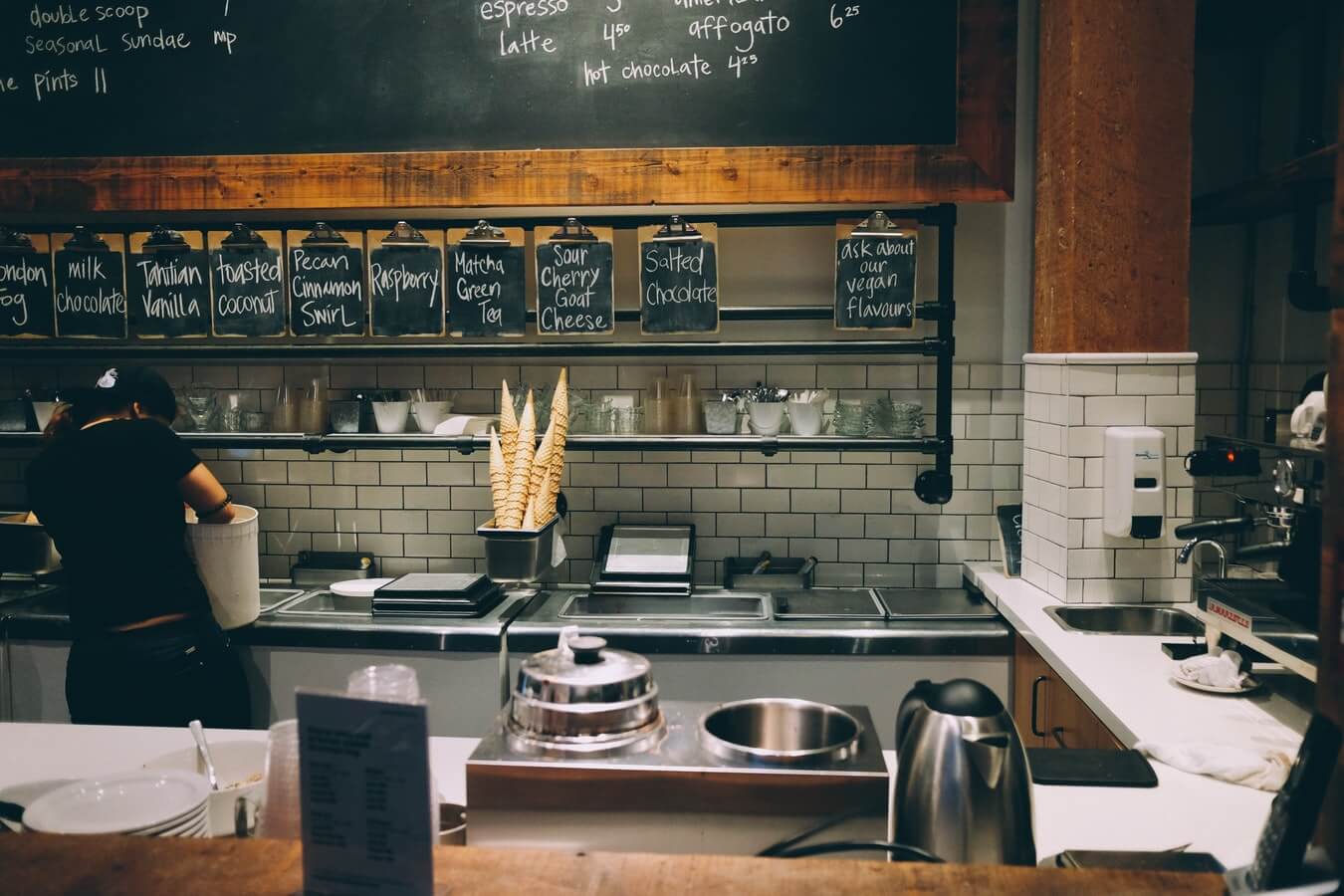The key to any restaurant’s success (or food business) definitely has to be its kitchen.
Its design could make or break the business as a whole.
If proper thought hasn’t been put into ensuring the kitchen runs as smoothly and efficiently as possible, then bad quality food is going to get to your customer’s tables late and you’ll have some seriously negative reviews.
And of course, this will affect your business’s finances too.
Everything must be planned and thought out way before you serve your very first customer.
Key things to think about:
- Storage
- Food Prep
- Meal Cooking
- Service
- Cleaning and Washing
In this article, we are going to go over everything you need to consider when you’re trying to figure out how to design a commercial kitchen for your own business.
Let’s talk kitchen layouts
You’ll need to make sure you free space up between pieces of equipment, from all angles as well as accounting for things like opening doors and also factoring in where your staff is able to freely walk around the kitchen.
There are quite a few core layout options you have that are common across all commercial kitchens in the world.
You’ll want to choose one and then cater it to personal preference and how you wish your kitchen to be organized:
- Island Style
- Zone Style
- Assembly Line
Island style
An island-style kitchen features one main block in the middle of the space, where the cooking equipment usually finds itself.
Then, things like storage and kitchen-to-serve transitions are on the outer surrounding walls.
Although, sometimes this can be reversed if the space available works better this way.
Zone style
In a zone-style layout, the kitchen will be divided into unique parts.
There will be a separate section for everything; food prep, cooking, refrigeration, and washing.
And of course, a section for the kitchen-to-service transition will be away from all of the action’ in the kitchen so the servers can do their thing.
Assembly line
The classic design of a kitchen which produces high amounts of food every hour, such as a pizza or sandwich place, is the assembly line.
As you can imagine, the kitchen is laid out in order of use and equipment so that it’s in a line, like a conveyor belt.
One staff member does their thing and then passes it on to the next one in the line.
Make sure to understand the flow of the Kitchen
Some of the layouts mentioned will only suit certain kitchen flows, so you’ll have to think about how your staff members are going to use the kitchen on a daily basis.
The best way to do this is to think about what each staff member needs to do as part of their daily work pattern and map out their projected paths.
You can then build the kitchen around these results.
Spatial planning
As we already know, the design of a commercial kitchen is essential for efficiency and safety but of course, what you choose to do with the design will also affect the revenue you’re going to make too.
You’ll want to assess the following things when you select your ultimate layout:
How many staff members are going to be using the space – the number of staff members dictates the amount of working and free space which is going to be needed.
What is the menu – The menu will dictate the catering equipment needed as well as what is going to be used at every dinner service
How much is available after the kitchen has been completed – the size of the kitchen, assuming you’ve already got a building, will dedicate how much you have left for the front of house area
These sorts of questions will allow you to get the balance of kitchen space and font of house space just right; you’ll know what you might actually not need as opposed to things that are definitely necessary to the success of your business.
If it means a cooker can be removed to give you more front-of-house space for an extra table or two, then this will help to generate more revenue and will be much healthier for your business.
Consider the materials you’re going to be using
Figuring out the layout of your kitchen is one thing, but deciding what materials you should be using is another; since you’re not only going to have to consider how it looks but you’ll need to understand how these materials can affect the way you and your staff work.
Use easy to clean materials
You’re going to want to make sure your kitchen is easy to clean, so picking the materials that allow for this is going to be essential.
A dirty kitchen will put you in breach of hygiene laws and will also impact the performance of the kitchen equipment you and your staff are using which will then obviously affect how they themselves perform.
And you could run the risk of damaging your equipment too, which will then put an unnecessary financial burden on you.
Surfaces that will come into contact with food should in no way absorb grease or water.
Stainless steel is your obvious choice here and must have a minimum grade of 304 to be used.
Walls
The walls must also be resistant to grease and food particles as well as being smooth and without any exposed fixings or ledges.
Of course, hygiene is vital so these surfaces should be easy to clean.
Other things to think about:
- Ceramic tiles if used should be fitted with anti-bacterial grout
- Flyscreens should be installed where windows can be opened
- Mesh should cover any external vents
- Junction of external walls and roof should be sealed
Kitchen flooring
Picking your flooring is the same as the other materials, it should be very easy to clean.
But it should also be non-slip so there aren’t any accidents in the kitchen when your staff is trying to work.
Types of floor to think about:
- Stainless steel with a non-slip profile and welded joints
- Epoxy ceramic tiles
- Quarry tiles with impervious sealer
- Polyvinyl tiles with head welded joints
Now you know how to design a Commercial Kitchen, I hope this guide will be your beginning of the business, now take a pen and start to run your business!


